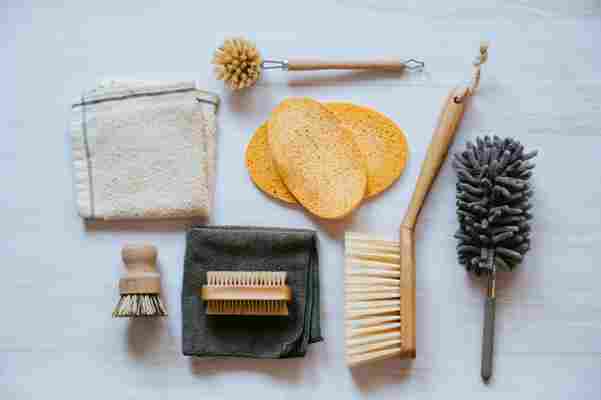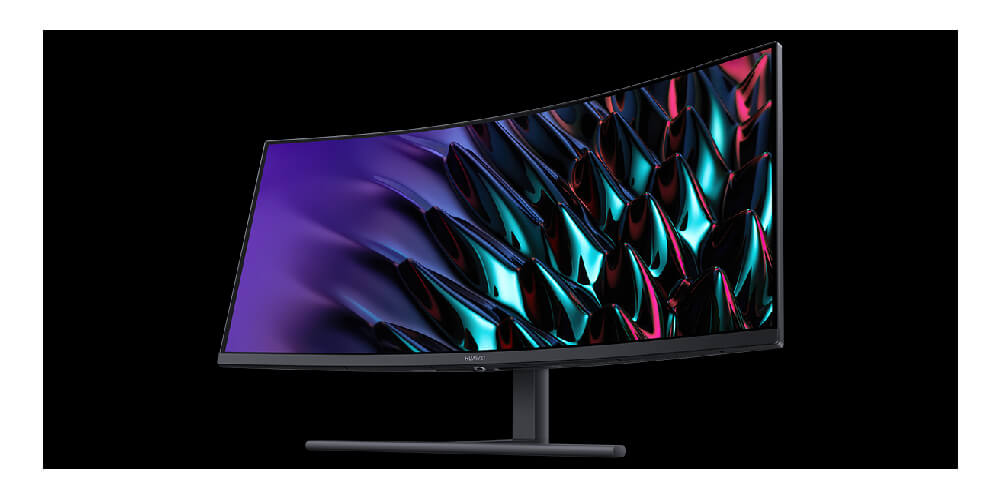How can you expect to have a sparkling clean house if your cleaning supplies and tools are filthy? A dirty mop is simply going to redeposit dirt or just move it around each time you use it. No one needs that.

Let's take a look at how to clean seven types of cleaning supplies and tools to help you get the best results with the least amount of effort.
How to Clean a Vacuum Cleaner
Canister, upright, and hand-vacuums should all be cleaned regularly.
What You Need
Supplies
Hot water
Dishwashing liquid
Essential oil (optional)
Tools
Seam ripper or small scissors
Instructions
Empty Bag or Reusable Cup After every use, dispose of the bag or empty the reusable cup. At least monthly, give the reusable cup a quick wash with hot water and a bit of dishwashing liquid to remove any trapped dust and greasy film. Clean Beater Bar Unless you have a vacuum like the Shark Apex Stick Vac with a beater bar that is self-cleaning, quickly remove any tangled hairs or threads from the beater bar, by using a seam ripper or very small, sharp scissors. Keeping it turning smoothly increases the effectiveness of your vacuum cleaner. Clean Hoses and Filters At least quarterly, inspect the hose for blockages and change disposable filters or wash reusable filters. To freshen the air while you vacuum, add a drop or two of your favorite essential oil to the filter.
How to Clean Mop Heads
Mop heads for dust or wet mopping can be made from cotton threads, microfiber
fabric, or sponge. Each type should be cleaned thoroughly after every use.
Discoloration is not a problem, but fibers that are saturated with soil simply
cannot gather or trap anymore leaving your floors dirty.
What You Need
Supplies
Heavy-duty laundry detergent
Chlorine bleach
Pine oil cleaner
Hot water
Tools
Washing machine
Large bucket or sink
The Spruce / Cristina Tudor
Instructions
Clean Removable Cotton and Microfiber Mop Heads Mop heads can be tossed in the washer with a load of towels. Use a heavy-duty detergent like Tide or Persil and a hot water cycle to remove the heavy build-up of grease and soil. If the towels are white, add one-half cup of chlorine bleach to the wash cycle to disinfect the mop. Hang the mop head to air dry naturally. Do not store until the fibers are completely dry. The Spruce / Cristina Tudor Clean Non-Removable Fabric Mop Heads Mix a solution of one gallon of very hot water and two tablespoons of a heavy-duty detergent or pine oil cleaner in a large bucket or sink. Allow the mop head to soak for at least 15 minutes and then move it up and down in the solution to loosen the soil. Rinse thoroughly in hot water and allow to drip dry. If the mop head smells sour, add one-half cup of chlorine bleach per gallon of the rinse water to disinfect the fibers. The Spruce / Cristina Tudor Clean Sponge Mop Heads After using a sponge mop, rinse it well in hot water. Then, mix a solution of one-half cup of chlorine bleach and one gallon of hot water. Add the sponge head and allow to soak for five to ten minutes. Rinse well and allow to air dry. The Spruce / Cristina Tudor
How to Clean a Broom
Whether you use a broom made from broomstraw, microfiber or extruded plastic, it needs to be cleaned periodically.
What You Need
Supplies
Dishwashing liquid
Hot water
Tools
Large bucket
The Spruce / Cristina Tudor
Instructions
Remove Trapped Dirt Take the broom outside and run the bristles over the edge of a step to whisk away trapped dirt. The Spruce / Cristina Tudor Deep Clean For a deeper clean, mix a bucket of hot water with two teaspoons of dishwashing liquid, swish the broom through the solution and then rinse with cold water. Hang the broom with the bristles pointing down to drip dry. Tips Never store your broom with the bristles down touching the floor. Hang or store it with the bristles up to maintain the proper shape and a crisp edge.
If your natural straw broom has lost its original shape, thoroughly wet the bristles and use large rubber bands or some string to reshape the bristles. Allow the broom to dry completely before removing the rubber bands. The Spruce / Cristina Tudor
How to Clean Sponges and Brushes
Cleaning is essential for sponges and brushes used in the kitchen as part of food preparation.
What You Need
Supplies
Hot water
Chlorine beach
Tools
Bucket or sink
The Spruce / Cristina Tudor
Instructions
Rinse in Hot Water After every use, rinse the sponge or brush well in hot water and store upright so that it will dry quickly. The Spruce / Cristina Tudor Disinfect Weekly At least once a week, mix a solution of one-gallon hot water and one-half cup chlorine bleach and allow the sponges and brushes to soak for five to 10 minutes. Note: Do not soak brushes that have wooden bases or handles. Dip them in the solution quickly and then allow them to air dry. Tip Dispose of sponges if they have an odd smell. That odor is bacteria that you are spreading over every surface the sponge touches.
Dispose of brushes once the bristles are flattened or split. The Spruce / Cristina Tudor
How to Clean Dusters
Unless you use disposable dusters every time you clean, your feather, microfiber, or wool fiber dusters must be cleaned after every use. These cleaning methods work for each type.
What You Need
Supplies
Dishwashing liquid
Warm water
Tools
Large bucket or sink
The Spruce / Cristina Tudor
Instructions
Remove Loose Dust After every use, take the duster outside and give it a really good shake for at least one minute. It helps to tap the handle against something firm to really loosen dust. The Spruce / Cristina Tudor Remove Embedded Dust If the duster looks soiled or isn't picking up dust as well as it once did, mix a solution of warm water and a bit of dishwashing liquid. Swish the duster through the mixture for several minutes. Rinse with warm water until it runs clear of any soapy residue. Gently squeeze out excess water and hang to drip dry. When the fibers or feathers are dry, rotate the handle between the palms of your hands to restore the proper shape. The Spruce / Cristina Tudor
How to Clean Cotton and Microfiber Cloths
Both types of cloths have their strengths when doing chores. Choose cotton cloths for heavy-duty jobs and anything that involves oily or harsh cleaning products. Microfiber cloths are more delicate and should never be used for heavy cleaning jobs. Use them for dusting or drying dishes only.
What You Need
Supplies
Heavy-duty laundry detergent
Chlorine bleach
Degreaser (optional)
Tools
Washing machine
Sink
Instructions
Wash Cotton Cloths Cotton cloths used for cleaning can be washed in the washing machine using hot water and a heavy-duty detergent to remove soil. If you're concerned about bacteria, add chlorine bleach to the wash cycle. If the cotton cloths are coated with grease or excessive amounts of cleaning products, allow them to presoak in a solution of hot water and a degreaser before washing. Never place oil-soaked cloths in a clothes dryer even after washing. They are combustible. Allow them to line dry. Clean Microfiber Cloths Wash microfiber cloths in warm water and avoid any fabric softeners or dryer sheets that will disrupt the dust-attracting qualities of the fibers.
How to Clean and Disinfect a Cleaning Bucket
Always start a cleaning chore with a clean bucket.
What You Need
Supplies
Hot water
Chlorine bleach, pine oil or phenolic disinfectant
Instructions
Rinse Bucket After the cleaning chore is finished, rinse the bucket with hot water. Disinfect the Bucket Fill the bucket with at least one gallon of hot water. Following label directions, add chlorine bleach, pine oil or phenolic disinfectant (Lysol). Swish solution around the interior of the bucket and dispose of the solution responsibly. Warning Never mix different cleaning products because toxic fumes can form. Always use chemicals in a well-ventilated space.












